Archive for April, 2017
Hyundai Australia Reveals Pricing For Reinvented i30.
Whilst their Korean based brethren, Kia, get some eyeballs cast over the Stinger, Hyundai have quietly launched a revamped i30, with a striking Euro inspired exterior and reinvented interior. With a starting price of $20950, $500 LESS than the outgoing model, the Hyundai i30 range is both priced and packed with added value enough to really appeal to keen eyed buyers. The range will consist of five models; the entry level Active, SR, Elite, SR Premium and Premium. The Active will offer a choice of two engines, a 2.0L petrol with manual or auto transmissions and a punchy 1.6L diesel with the same engine combination.
The range will consist of five models; the entry level Active, SR, Elite, SR Premium and Premium. The Active will offer a choice of two engines, a 2.0L petrol with manual or auto transmissions and a punchy 1.6L diesel with the same engine combination.
The SR and SR Premium will be powered by a turbo petrol 1.6L with the Elite and Premium getting the 1.6L. Power and torque are thus: the 1.6L turbo petrol offers 150 kilowatts and 265 Nm of torque for both transmissions. The diesel gives 100 kW, 280 Nm for the manual and slightly more for the seven speed dual clutch auto, at 300 Nm. The standard 2.0L petrol presents 120 kW/203 Nm, with fuel economy almost lineball with the smaller petrol turbo at 7.3L/100 km & 7.4L/100 km (manual/auto), 7.5L/100 km for the 1.6L turbo and a country kilometre eating 4.5L & 4.7L per 100 km for the diesel manual and auto.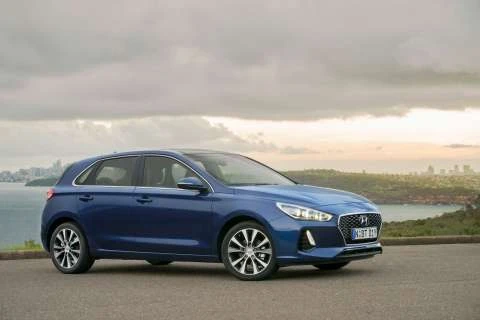 Pricing starts as mentioned, with the Active manual at $20950 (auto is $23250). What you’ll get for your dosh above the outgoing model is: dusk sensing headlights, LED running lights, 16 inch alloys, satnav on a eight inch screen, and more. The diesel versions come in at $23450 and $25950 for manual and self shifter.
Pricing starts as mentioned, with the Active manual at $20950 (auto is $23250). What you’ll get for your dosh above the outgoing model is: dusk sensing headlights, LED running lights, 16 inch alloys, satnav on a eight inch screen, and more. The diesel versions come in at $23450 and $25950 for manual and self shifter.
Moving up into the SR and SR Premium duo, you will pay $25950/$28950 (SR manual and auto) and $33950 for the SR Premium with auto only. The Elite and Premium round out the field with pricing of $28950 and $33950 for the diesel and auto combo. There’s $5000 of extra value in the SR and SR Premium, for just a small increase overall.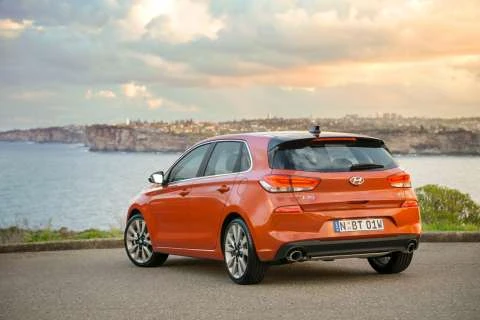 The SR will add in above the outgoing model: a multi-link rear suspension, Hyundai’s SmartSense safety package which includes (and will be available for the Active by year’s end) Emergency Braking/Driver Attention Alert/Lane Keep Assist and Smart Cruise Control (auto only), Blind Spot Alert and Rear Cross Traffic Alert, wireless phone charging on the Qi standard, eight inch satnav screen, Hill Start Assist, Tyre Pressure Monitoring 18 inch alloys wrapping around larger brakes discs, and an Electronic Parking Brake for the DCT.
The SR will add in above the outgoing model: a multi-link rear suspension, Hyundai’s SmartSense safety package which includes (and will be available for the Active by year’s end) Emergency Braking/Driver Attention Alert/Lane Keep Assist and Smart Cruise Control (auto only), Blind Spot Alert and Rear Cross Traffic Alert, wireless phone charging on the Qi standard, eight inch satnav screen, Hill Start Assist, Tyre Pressure Monitoring 18 inch alloys wrapping around larger brakes discs, and an Electronic Parking Brake for the DCT. 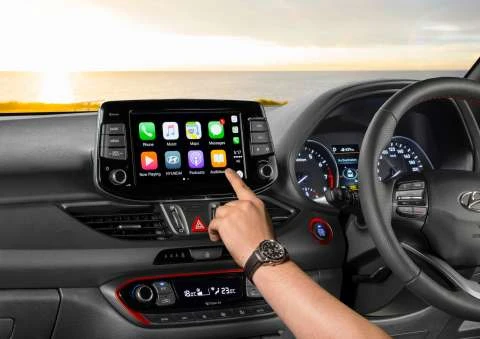 SR Premium sees LED headlights and indicators as well, along with (at last!) heating AND venting for the front seats, as does the Premium. The Elite gets leather trim, whilst SR gets a Sports Leather trim setup with metallic red trim inserts, red stitching and piping, and black headlining.
SR Premium sees LED headlights and indicators as well, along with (at last!) heating AND venting for the front seats, as does the Premium. The Elite gets leather trim, whilst SR gets a Sports Leather trim setup with metallic red trim inserts, red stitching and piping, and black headlining.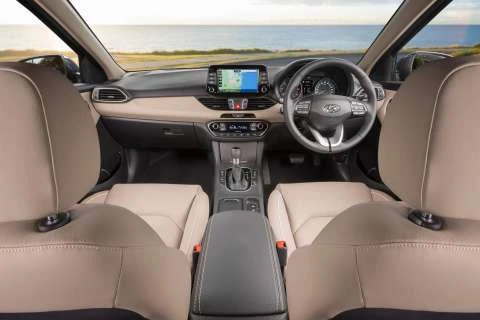 The eight inch touchscreen will be both Android Auto and Apple CarPlay compatible, with a DAB+ tuner, whilst safety comes up trumps with seven airbags and a maximum ANCAP five star rating. Apart from the Active, Smart Key entry is standard. Plus Hyundai will offer this: “With Hyundai iCare, the joy of buying a Hyundai will stretch well beyond the showroom.
The eight inch touchscreen will be both Android Auto and Apple CarPlay compatible, with a DAB+ tuner, whilst safety comes up trumps with seven airbags and a maximum ANCAP five star rating. Apart from the Active, Smart Key entry is standard. Plus Hyundai will offer this: “With Hyundai iCare, the joy of buying a Hyundai will stretch well beyond the showroom. 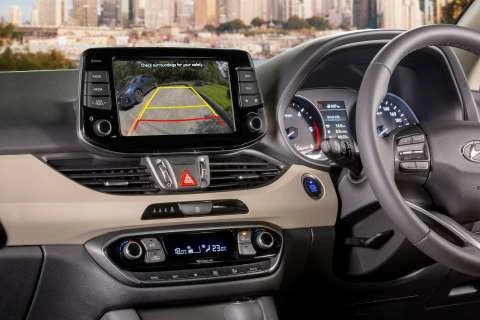 This leading customer care program offers a comprehensive suite of owner benefits including; Lifetime Service Plan, 5 Year Unlimited Km Warranty, complimentary Roadside Assist for 12 months on new vehicles, 1,500km complimentary first service, a dedicated Customer Care Centre, and myHyundai – an exclusive owner website. When servicing with Hyundai, customers will also receive a 10 Year Sat Nav Update Plan, a Roadside Support Plan for up to 10 years and more.”For further details, and to book a test drive, contact Hyundai Australia.
This leading customer care program offers a comprehensive suite of owner benefits including; Lifetime Service Plan, 5 Year Unlimited Km Warranty, complimentary Roadside Assist for 12 months on new vehicles, 1,500km complimentary first service, a dedicated Customer Care Centre, and myHyundai – an exclusive owner website. When servicing with Hyundai, customers will also receive a 10 Year Sat Nav Update Plan, a Roadside Support Plan for up to 10 years and more.”For further details, and to book a test drive, contact Hyundai Australia.
Towards Zero: The Dream And Why It Won't Work.
Every government around the world will tell you that they would love to see a zero road death toll. Anyone that has lost a friend or family member in a car crash will more than likely tell you the same thing. In early 2017, the state government of New South Wales launched a new safety on roads initiative called Towards Zero. Here’s a quote from the website: “Initiatives to ensure safer roads, speeds, people and vehicles need to be implemented together so the road system not only keeps us moving, but safe and protected.”
The idea is admirable. Make our roads safer so that no one will die. Great idea. A wonderful idea, especially when you read: “People are human and sometimes make mistakes – a simple mistake shouldn’t cost anyone their life.” and “Roads, roadsides and vehicles need to be designed to minimise crashes or reduce forces if a crash happens.”
Leaving aside the lack of an Oxford comma in quite a few parts of the website, the idea of a zero road toll, using the two of the three opening statements listed, really appeal and make it look that it isn’t as far fetched as their dream would seem to be. But it’s here where this dream is seen as fanciful and unrealistic: “Road safety is a shared responsibility – everyone needs to make safe decisions on and around the road to prioritise safety.”
Governments in Australia have a huge focus on road safety and quite rightly. However that focus is narrow, myopic, and singular. Each and every government will sit down with you and with a look of utter sincerity tell you that speed kills. They’ll also shake your hand slowly and tell you that the only cause of fatal crashes on our roads is speeding. Then they’ll burp and remind you of fatigue being a cause also. Fair call there.
Let’s look at the numbers as prepared by the NSW Bureau of Statistics and provided to the NSW Transport Department. In the twelve month period that ended on March 31st, 2017, there were 373 fatalities in NSW. That’s 373 people per 100,000 people of the population. Per 10000 vehicles it’s just 0.7. The rate per one hundred million vehicle kilometres? 0.5. Yes. 0.5 per one hundred million vehicle kilometres travelled.
Using the month of March (as the most recent month completed) over the last decade, it sees an average of 28 fatalities per month. That’s just shy of one per day. From a population of over five million alone in Sydney. In March of 2017, 15 of the 29 deaths were driver related. That’s down three from 2016. It’s also eleven down from the previous year’s three months ending March and the third lowest January to March total since 1945.
The ages of those killed tell a startling story. 5 drivers were between the ages of 17 and 20, whilst 17 were between 30 and 59. Read that again: 17 drivers died that were between the ages of 30 and 59. This is the age group range that, theoretically, SHOULD be the safer driver’s age range. Somewhat unsurprisingly, 22 of the 29 were male. Locations varied also; seven were in the area classified as Sydney, and six in the southern region. The Hunter Valley and Western regions shared five apiece. Given the population of NSW at the end of September 2016 was an estimated 7,757,800, the 22 deaths outside of Sydney in March of 2017 represent a disproportionate amount.
Strikingly, NONE of the 22 were on a road classified as a freeway. 9 were on state highways whilst 11 were on roads classified as Main/Secondary/Tourist with a further 9 on roads classified as…unclassified. In areas classified as metropolitan areas, only Sydney saw a number of fatalities, compared to Wollongong and Newcastle. But virtually half, 14, were seen as being listed under “Country, non urban, greater than 80 kilometres per hour”. It’s here a cynic might claim that speed kills…
Of those 29, 17 were in cars. That’s four less than March 2016. Five were light trucks. 13 less than the same time last year. Even fatalities for heavy truck crashes were down, 11 less than before. Now for some good news. Although the NSW government would have us believe that we’re in a real spot of bother when it comes to fatalities, it’s a consistent DOWNWARD trend since 1989, where somewhere in the order of 1000 people lost their lives. There’s been a couple of gradual rises and a spike or two, noticeably in 2006 and 2010, but the trend is most definitely on the way down.
NOW: some better news in the battle against some things we’re told are the causes of fatal crashes. Please note those two words: fatal crashes. A recent analysis of 340 serious casualty crashes in Victoria and NSW between 2000 and 2011, using data gleaned from forensic examination of crash scenes and anonymous interviews with drivers has found that in 0.9 per cent of crashes the driver was using a mobile phone. 0.9%. As the information source says: “If using mobile phones is significantly dangerous then we could expect to see a dramatic increase in traffic accidents in the last decade. In fact, the reverse is true. “Between 1997 and 2011 seven fatalities were recorded in which using a hand-held mobile phone was a possible contributing factor. However, it is not known to what extent other factors such as alcohol, speed and fatigue also contributed to these fatal crashes.
The study from the Monash University Accident Research Centre (MUARC) found that intoxicated drivers caused 13.5 per cent of crashes, drivers falling asleep resulted in 11.8 per cent of crashes and 3.2 per cent of crashes were caused by passenger interactions. Here’s a list of causes:
| 13.5% | Intoxication |
| 11.8% | Fell asleep |
| 10.9% | Fatigued |
| 3.2% | Failed to look |
| 3.2% | Passenger interaction |
| 2.6% | Felt ill |
| 2.6% | Blacked out |
| 1.8% | Feeling stressed |
| 1.5% | Looked but failed to see |
| 1.4% | Animal or insect in vehicle |
| 0.9% | Using a mobile phone |
| 0.9% | Changing CD/cassette/radio |
| 0.9% | Adjusting vehicle systems |
| 0.9% | Looking at vehicle systems |
| 0.3% | Searching for object |
Note something? Not one mention of speeding aka excess velocity for the posted limit. That’s why you’ll hear the pithy line of “almost 40% of fatal crashes had speed as a factor” because the car was in motion at the time. The reverse is: “over 60% of fatal crashes DIDN’T have speed as a factor.” What is hard to find is the posted limit in which this excess speed factor was a factor.
Another factor is, which to Toward’s Zero’s credit, they address, is road design, which includes traffic light timing. In NSW there’s a peculiar leaning towards having traffic coming off a freeway being given a green light only to be heading towards a red light, which aids traffic flow not at all. In peak periods some roads that badly need more green light time see drivers, utterly frustrated with five seconds, break the law and run the red light in oreder to save minutes of waiting. Then there’s the adsurbity of Sydney’s freeway designs, where two major inbound lanes merge within just a couple of hundred metres which causes gridlock every morning and afternoon.
However, there is one factor that is a constant, a factor that will always be part of the reason “Towards Zero” is doomed to fail. Some call it the OVI, the Organic Vehicle Interface. Others call it the nut holding the wheel. Quite a few call it “that f**king useless idiot”. It’s the driver that believes they have a sovereign right to not indicate, to tail gate, to drive at night or in rain without headlights on, to run red lights (such as: Ran red light for food), to not stop safely for amber lights, to have trailers not connected properly, to not reach highway and freeway merge speeds, to not react at the appropriate speed when given a green light, to drive at the wrong speed in a lane other than the left, to listen to headphones whilst in a vehicle with a perfectly serviceable audio system, to comb their hair or read a book or eat breakfast or just act, as James May might say, like a complete cock.
The bottom line is this: we’ve been fed a diet of lies, obfuscation, misdirection, when it comes to why people die on our roads. We’re effectively told that a blanket reason for fatal crashes is excess speed. What I haven’t included here, simply, is the sheer outright cost to the community when it comes to crashes that aren’t fatal. The costs of hospitalisation, insurance, road and property repairs, but is a fair bet that they’ll be of huge numbers and, again, not strictly speed related. Driver training seems, nowadays, to not impart anything more than “Hop in, turn on, select D, go” and that also is a reason why we won’t see a zero road toll. No engagement in driving means real awareness of what it means to be a DRIVER will always not be a part of the driving experience. And in a nutshell that’s why Towards Zero will fail.
Information sourced from http://www.keepyoureyesontheroad.org.au, http://www.towardszero.nsw.gov.au/, http://roadsafety.transport.nsw.gov.au/downloads/dynamic/nsw-road-toll-monthly.pdf
Opinion is that of the author and not neccessarily that of the site owner.
Italy's Finest
What do Abarth, Alfa Romeo and Fiat have in common? Cars from these manufacturers come from Italy, of course. Maserati, Ferrari and Lamborghini are the exotic sports cars from Italy. Italians are capable of producing some really eye-catching cars that ooze style and performance. What are some new cars on offer from these Italian manufacturers (just in case you’re wanting one of these) and what’s on the near horizon? Let’s take a look.

Abarth is Fiat’s sporty wing that produces exciting and affordable Italian cars. These guys could get you into a brand new 124 Spider – a really fun and exciting roadster. The Abarth 124 Spider is Italian’s version of a Mazda MX-5. Amazing road holding, lovely lines and a small Turbo engine means that this little open-top sports car can fly, and fly efficiently.
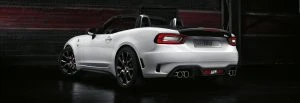
Abarth 124 Spider
Want to go as small as possible and still be able to keep up with the big boys? The new and cute Abarth 595 and 595C get power from a 1.4-litre Turbo T-Jet engine with a peak power of 103 kW and a maximum torque of 206 Nm. With a top speed of 204 km/h and an acceleration of 7.9 seconds to reach 100 km/h from a standstill are sensational for such a cute little sports car.
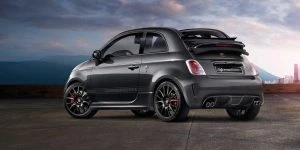
Abarth 595C
Fiat also provides some great everyday drives. One of the new standout cars is the cleverly packaged Fiat 500X. The raised ride height and bigger curves of the new 500X make the standard 500 somewhat dwarfed. AWD traction, Multijet Turbo performance and modern, unique interiors enable you to travel in style and tackle some of the less travelled back roads or city curbs.
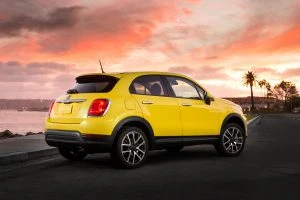
Fiat 500X
Fiats new Doblo and Ducato vans are really efficient and practical load carriers.
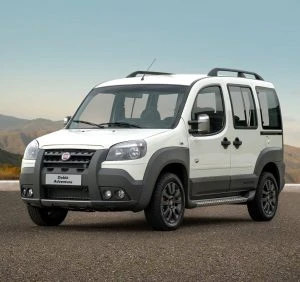
Fiat Doblo
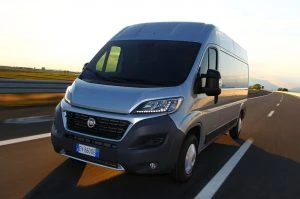
Fiat Ducato
New Alfa Romeo cars are some of my favourites. Who wants a practical car with loads of style and performance? The Giulia is a direct rival for the BMW 3, 4 and 5 Series models. The Giulietta is the hatch with style and practicality, while the brand new Stelvio is Italy’s answer to the sporty SUV.
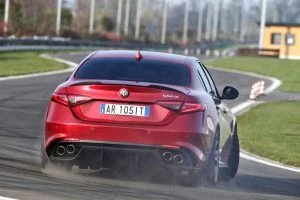
Alfa Romeo Giulia
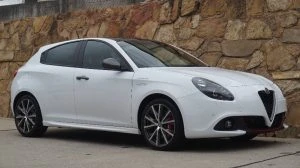
Alfa Romeo Giulietta
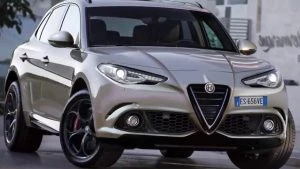
Alfa Romeo Stelvio
Rare in Australia are the Maserati range of cars. If you’re on the lookout for something really special, the Maserati range is truly exotic and covers sporty coupes, sedans, SUVs and cabriolets. A choice of two twin turbo V6 petrol engines and a 3 litre V6 Turbo diesel engine are available for the new Ghibli. Gorgeous lines are matched with the car’s sport leather interior.
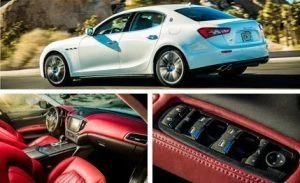
Maserati Ghibli
If you’re in the know, Ferrari and Lamborghini supercars scare the pants off the Germans! They are very good at going very fast, and look the goods time-and -time again.
The new Ferrari FF with 495 kW and 683 Nm is an AWD V12 powerhouse.
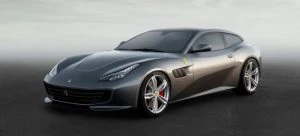
Ferrari FF
The new Lamborghini Huracan with V10 power and 600 Nm.
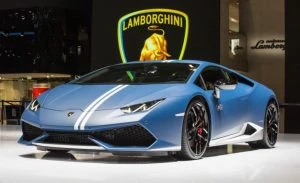
Lamborghini Huracan
Italy is a cool country not just because of its ability to make gorgeous cars but also the country’s land mass is shaped like a boot. Little wonder that Italians are excellent shoe designers, too!
Mitsubishi Fast Charges The Outlander PHEV.
Mitsubishi Motors’ new Outlander PHEV has arrived in Australia with a revised design, new technology, increased refinement and additional fast charging flexibility.
In a comprehensive update to the best-selling EV in the Australian market, the new Outlander PHEV has adopted the styling changes from the Model Year 2017 Outlander range while introducing new technology and increased convenience. The Outlander PHEV was developed from the ground up to be driven by either an internal combustion engine or hybrid technology and as a result there are no compromises in terms of packaging, practicality or driving dynamics.
The Outlander PHEV was developed from the ground up to be driven by either an internal combustion engine or hybrid technology and as a result there are no compromises in terms of packaging, practicality or driving dynamics.
Available in two specification grades, LS and Exceed, both come with new features such as; Mitsubishi’s Smartphone Link Display Audio with Apple CarPlay, Android Auto2 integration, and Digital Radio (DAB+), electric folding and heated exterior mirrors, LED headlamps with auto levelling and an electronically controlled park brake with Auto Hold function and a DC fast charging socket.
New safety features available as standard on Exceed include, Adaptive Cruise Control, Forward Collision Mitigation with human detection, Multi Around Monitor, Auto High Beam, Lane Departure Warning, Blind Spot Monitor, Lane Change Assist, Rear Cross Traffic Alert, and an Ultrasonic Mis-acceleration Mitigation System.
For 2017 Mitsubishi introduces a new EV Priority Mode across all variants. The new EV switch is located below the 4WD button and once activated, it allows the driver to operate the vehicle in EV mode without the engine starting, provided there is sufficient charge in the batteries.
The electronic parking brake’s auto hold button function which, when activated, holds the vehicle in traffic or on an incline the same way a handbrake would, allows the driver to release the footbrake.
Its stylish and functional interior includes a redesigned steering wheel, new accent trim, improved seating comfort with premium finishes and materials to give the cabin a more sophisticated feel. The new Outlander PHEV delivers a smooth, more responsive on-road performance with improvements to noise levels, ride, handling and throttle response.
The new Outlander PHEV delivers a smooth, more responsive on-road performance with improvements to noise levels, ride, handling and throttle response.
Ride quality and comfort have been enhanced with increased structural rigidity in the body, revised suspension design, new Electric Power Steering calibration and reduced noise, vibration and harshness (NVH) throughout the vehicle.
The new Outlander PHEV retains its predecessor’s outstanding safety and environmental performance through the use of cutting-edge four-wheel drive, passive safety technology as well as fuel-efficient engine technology.
Pure EV range extends up to a maximum of 54km, while overall fuel economy has been reduced to 1.7-litre per 100km based on the ADR 81/02 fuel economy cycle.
Mitsubishi Motors Australia Executive Director of Marketing Tony Principe said the new Outlander PHEV builds on the model success in this market.
“The Outlander PHEV is now more stylish, refined and has increased practicality with the addition of a DC fast charge socket capable of recharging the battery to 80% capacity in around 25 minutes,” said Mr Principe.
“Of course, if owners can’t find a recharging station, they don’t have to change their plans as the Outlander PHEV is not limited by the availability of recharging infrastructure.” Exterior
Exterior
‘Dynamic Shield’ front design including dark chrome and silver plated grille, silver skid plate, LED headlamps, Day time Running Lamps (DRL) and fog lamps with chrome bezel complete the front design of the new Outlander PHEV.
The sharper rear styling features a new design bumper and silver skid plate. The shark fin antenna, chrome tailgate garnish with LED rear combination lamps and rear fog lamp to complement the front design.
Outlander’s new exterior design is unified overall through the use of wheel arch mouldings, silver roof rails and chrome door sill garnish. New look 18-inch black and polished alloy wheel design complete the modern exterior.
Interior
The new Outlander PHEV gets a fresh design update to the interior space incorporating stylish yet functional features.
The interior is embellished with soft touch features and premium grade materials at every contact point. A new design four spoke steering wheel features gloss black bezel and new accent trim has been applied to the doors, dash and centre console. New material headlining, subtle stitching highlights on the instrument panel and a soft centre armrest enhance the sophisticated feel of the cabin. Seating comfort has been greatly enhanced with improved lateral support and an increase in side bolster stiffness. The LS seats feature black Sports cloth trim with leather look bolsters, while the Exceed’s new style leather facings complement the new interior look.
Seating comfort has been greatly enhanced with improved lateral support and an increase in side bolster stiffness. The LS seats feature black Sports cloth trim with leather look bolsters, while the Exceed’s new style leather facings complement the new interior look.
Performance
The new Outlander PHEV boasts improved handling dynamics and greatly reduced noise, vibration and harshness (NVH) along with increased body and structural rigidity for a super quiet and composed ride.
NVH improvements have been developed in part from the application of extensive sound insulation and isolation damping materials throughout the vehicle. Engine noise, cabin boom, road and wind noise are all reduced due to noise-isolating windscreen glass, improved weather stripping, new tyres, damper tuning and modified suspension mounts.
Its low centre of gravity and excellent weight distribution make for exceptional driving dynamics, further enhanced with suspension updates. The Outlander PHEV offers an ultra-smooth driving experience, with a 2.0-litre petrol engine and a seamless transition between three driving modes (EV, series hybrid, parallel hybrid), which combine to deliver optimum performance regardless of driving conditions.
Outlander PHEV’s dynamic performance continues to be refined with a number of suspension changes to enhance overall ride comfort and stability. New shock valves advance linearity and body control, while new rear toe link bushes provide improved lateral rigidity. Lower friction front struts and larger rear shock absorbers with new damping contribute to improved steering linearity, while rear shocks have been tweaked to boost stability and ride comfort.
The Outlander PHEV is unique in offering adaptive four-wheel drive with twin electric motors driving the wheels. The front and rear axles are each equipped with their own high-output motor to deliver powerful acceleration when needed, while maintaining an incredibly responsive 4WD performance.
The Outlander PHEV maintains its five-star ANCAP safety rating thanks to its combination of active and passive safety features.
The Reinforced Impact Safety Evolution (RISE) body structure is further bolstered with a suite of active safety features.
Like all models in the Mitsubishi range, the Outlander PHEV is backed by a 5 year/100,000km warranty.
Product overview:
Layout:
At the front: Electric motor + inverter (60 kW – 137 Nm), Electric generator 2.0 litre MIVEC DOHC petrol engine (89 kW – 190 Nm). Power Drive Unit In the middle, under the floor: 12 kWh, 80 cells, 300 V Lithium-Ion air-cooled battery pack plus 45 l fuel tank. At the rear: Electric motor + inverter (60 kW – 195 Nm) and Rear Motor Control Unit.
Multiple charging choice :
Automatic “on-the-go” charging, in – Series Hybrid and Parallel Hybrid Modes
Standard on-board dual plug-in charger for : Normal charging (approx 6.5 hours for 100% charge – 230V – 10 A or 3h30 with 16 A). Quick charging (approx 25 min for 80% charge )
Battery Charge Mode:Driver-activated (switch on centre console), Autonomous self-charging through ICE
Can also be activated when the vehicle is stationary and can recover 80% charge in approx 40 min.
Regenerative Braking (cannot be controlled when Adaptive Cruise Control (ACC) is active.
Activated either when lifting off accelerator pedal or when braking
Degree of regeneration controlled by driver : « B » position on shifter with two selectable levels
Six incremental steps through steering wheel-mounted paddles
Additional EV features :« Battery Save Mode » :Driver-selected meant to switch automatically to « Series Hybrid Mode » or « Parallel Hybrid Mode » to save on electricity, allowing to later enter CO2-restricted city centers or quiet residential areas, or simply to enjoy nature in full silence.
Remote monitoring through dedicated WiFi smartphone app, « Acoustic Vehicle Alerting System (AVAS) to warn pedestrians. Electric hot water-powered heater. Illuminated twin charge port (regular and quick) recess behind lid – with charging indicator (on/off lamp) and energy level gauge show charging status and level. 5 m standard charging cable with heat insulation, GND OPEN detector features and safety gauge. PHEV system designed to support long-term Vehicle-to-Grid (V2G) smart grid protocol and EV Priority switch – to prevent the PHEV system to switch to hybrid mode and therefore retain the full electric driving on demand.